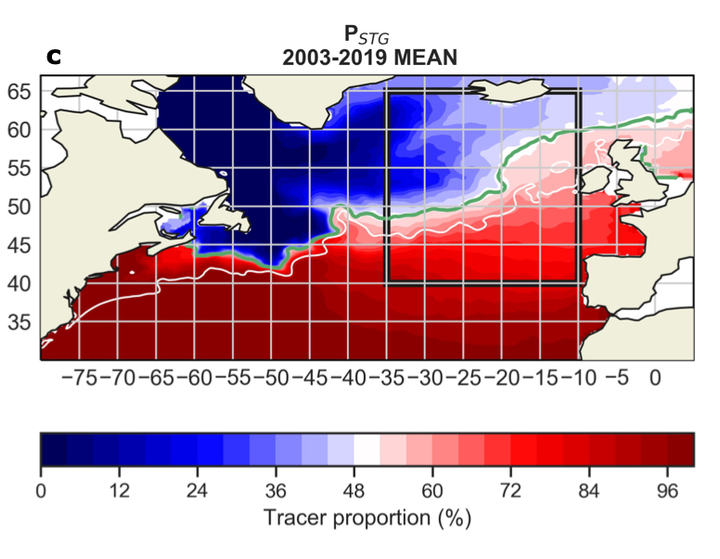A shift in the ocean circulation has warmed the subpolar North Atlantic Ocean since 2016

Abstract
The Subpolar North Atlantic is known for rapid reversals of decadal temperature trends, with ramifications encompassing the large-scale meridional overturning and gyre circulations, Arctic heat and mass balances, or extreme continental weather. Here, we combine datasets derived from sustained ocean observing systems (satellite and in situ), idealized observationbased modelling (advection-diffusion of a passive tracer), and a machine learning technique (ocean profile clustering) to document and explain the most-recent and ongoing cooling-towarming transition of the Subpolar North Atlantic. Following a gradual cooling of the region that was persisting since 2006, a surface-intensified and large-scale warming sharply emerged in 2016 following an ocean circulation shift that enhanced the northeastward penetration of warm and saline waters from the western subtropics. The long ocean memory of the Subpolar North Atlantic implies that this advection-driven warming is likely to persist in the near-future with possible implications for the Atlantic multidecadal variability and its global impacts.